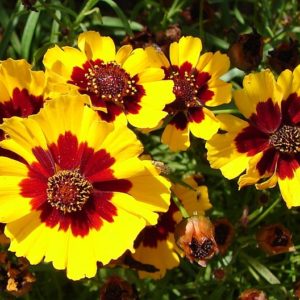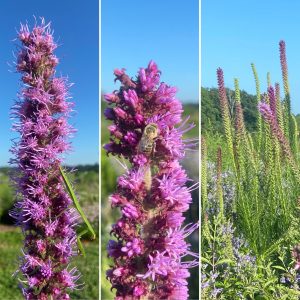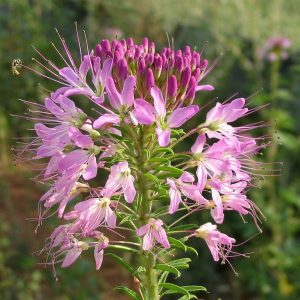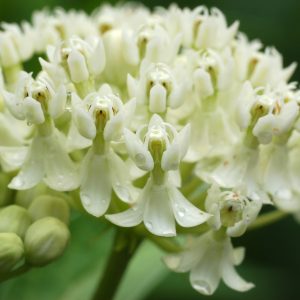Coreopsis lanceolata Seeds – Golden Tickseeds
Fields of golden flowers appear across large areas of North America in late Spring, the arrival of Lanceleaf Coreopsis blooms adds a yellow hue to the landscape.
Grown direct from seed sown in fall the coreopsis seeds are ready to germinate as weather and growing conditions improve.
Coreopsis performs well in a garden or wild meadow setting, producing masses of golden-yellow flowers with a red-tinged center.
Lance shaped leaves create a lush background to the abundant blooms.
Adaptable to moist or dry conditions the golden tickseed as it is commonly known continues flowering until the first frost if dead-headed often or will self-seed freely.
Loved by nectar hungry pollinators the cheerful flower of Coreopsis is best sown directly where it is to flower.
Best results are achieved if fall sowed giving the seeds a natural stratification, to aid germination and improve overall results including plant health.
Coreopsis should be one of the first native seeds on your must-have plant list, great for beginners and reliable for a great Summers floral display.
Native Pollinators:
Popular with an array of pollinators, particularly butterflies and bees, and plentiful seed for fall birds.
Harvested from my own pollinator-friendly plants these sun-loving lanceleaf coreopsis make a cheerful addition to any butterfly or wildflower garden.
Thriving on poor soils in full sun, on the prairie, or at home in the cottage garden, plant with Rudbeckia, Solidago, and Grasses.
We hand collect and clean our seeds all freshly collected seeds, seed may contain some natural chaff or seed parasols depending on the difficulty level of seed cleaning, we leave plenty for the birds.
Seed Storage and Sowing:
Once you receive your seeds best kept refrigerated for 4 or more weeks (unless Fall sowing) to help break seed dormancy and keep fresh for seasonally appropriate sowing.
Seed Count:
Average of 5o+ seeds per pack, shipped tracked for your convenience spend $20 or more in one transaction and get free shipping.
Cold Stratification or Direct Sowing: Recommended. (See Winter Jug Method )
Direct sow seeds in fall and allow seeds to naturally cold stratify. When starting seeds indoors, sow finely and barely cover seeds with soil. I recommend sowing these seeds, direct in Fall on a prepared seedbed or garden container, water well, and protect from winter weather with a fabric fleece if some seeds germinate early. Also known as cold stratification and can be completed anytime of the year by placing seed packs in a cool drawer of a refrigerator for 4-12 weeks to break seed dormancy.
1) Sow direct in a prepared weed-free seedbed
2) Cold frame sheltered location in small pots outdoors
3) Under lights indoor grow room
4) Bright windowsill with drip tray and propagator cover
I like to grow in pots this way you can break dormancy, simply by moving the pots around and most seeds germinate in batches, care must be taken when picking out to avoid disturbing emerging seedlings.
Pot young plants on until large enough to plant out, this native plant mix prefers poor soil in full sun. Full instructions, border design and planting ideas available online by searching igrowhort native-seed-collections.
Native plants maintain balance and provide habitat and eco-systems for resident and migratory wildlife. Due to many years of ecological destruction, development and toxic pollution many native wild flowers, and wildlife are under-threat of extinction.
We all have an important role to play, no matter how small your garden or balcony a few plant pots filled with natives instead of alien ornamentals of genetic hybrids that offer very little to no benefit to feeding insects and birds.
Time to make a small difference on a global scale and encourage our neighbors friends and families to sow a patchwork quilt of native wildflowers like a blanket to protect our sacred planet!









Reviews
There are no reviews yet.